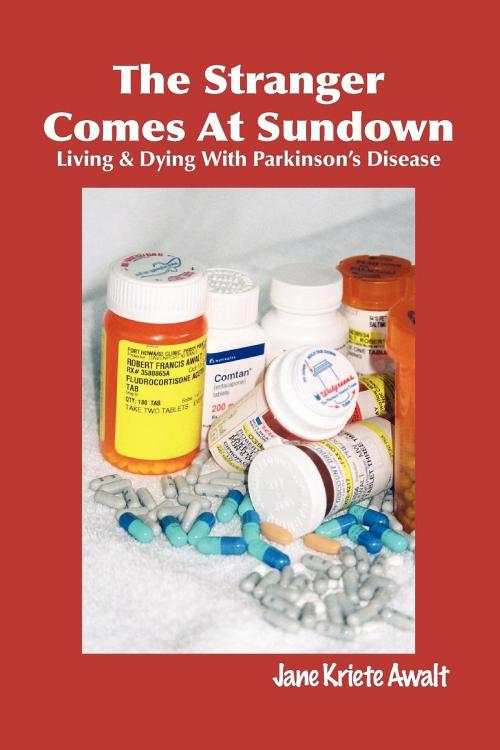The Stranger Comes at Sundown
Living & Dying with Parkinson's Disease
Nonfiction, Health & Well Being, Health, Health Care Issues| Author: | Jane Kriete Awalt | ISBN: | 9781936744824 |
| Publisher: | Rio Grande Books | Publication: | February 1, 2008 |
| Imprint: | Language: | English |
| Author: | Jane Kriete Awalt |
| ISBN: | 9781936744824 |
| Publisher: | Rio Grande Books |
| Publication: | February 1, 2008 |
| Imprint: | |
| Language: | English |
More than 1,000,000 people in the United States are living, struggling, and dying with Parkinson’s Disease — 50,000 more are diagnosed in this country every year. A personal journal of one family’s struggle with the progression of Parkinson’s Disease — One can understand the medicine and the treatment for this devasting disease, but nothing prepares one for living & dying with Parkinson’s; this journal takes the reader by the hand as this disease takes control of one man’s life. For most of the last two years of her husband’s fifteen-year battle with Parkinson’s disease, Awalt kept a journal. As a primary caregiver, she brings the reader into her concerns: Will he wander away from the apartment during the night? Will he manage to reach the toilet or will she have another major cleanup chore? Will she be able to get him back into his bed when he falls out? Over and over, she gives thanks for the washer and dryer in the apartment. Over and over we hear about that Stranger who comes, frequently at sundown, to take over her husband’s personality, a Stranger who begins to act out violently. During the final three months, when she knows she can no longer continue to care for him herself, Awalt goes daily to spend hours with him at the Medical Center. This part of her journal keeps one turning page after page to see what would happen next. Written for other caregivers, Awalt makes her case clear for better communication between doctor and family members. She spells out flags to watch for in other Parkinson’s patients. One wonders what her husband’s last days would have been like without her presence in the Medical Center, in spite of the good care and extremely high costs of his treatment. It is an insightful read.
More than 1,000,000 people in the United States are living, struggling, and dying with Parkinson’s Disease — 50,000 more are diagnosed in this country every year. A personal journal of one family’s struggle with the progression of Parkinson’s Disease — One can understand the medicine and the treatment for this devasting disease, but nothing prepares one for living & dying with Parkinson’s; this journal takes the reader by the hand as this disease takes control of one man’s life. For most of the last two years of her husband’s fifteen-year battle with Parkinson’s disease, Awalt kept a journal. As a primary caregiver, she brings the reader into her concerns: Will he wander away from the apartment during the night? Will he manage to reach the toilet or will she have another major cleanup chore? Will she be able to get him back into his bed when he falls out? Over and over, she gives thanks for the washer and dryer in the apartment. Over and over we hear about that Stranger who comes, frequently at sundown, to take over her husband’s personality, a Stranger who begins to act out violently. During the final three months, when she knows she can no longer continue to care for him herself, Awalt goes daily to spend hours with him at the Medical Center. This part of her journal keeps one turning page after page to see what would happen next. Written for other caregivers, Awalt makes her case clear for better communication between doctor and family members. She spells out flags to watch for in other Parkinson’s patients. One wonders what her husband’s last days would have been like without her presence in the Medical Center, in spite of the good care and extremely high costs of his treatment. It is an insightful read.















